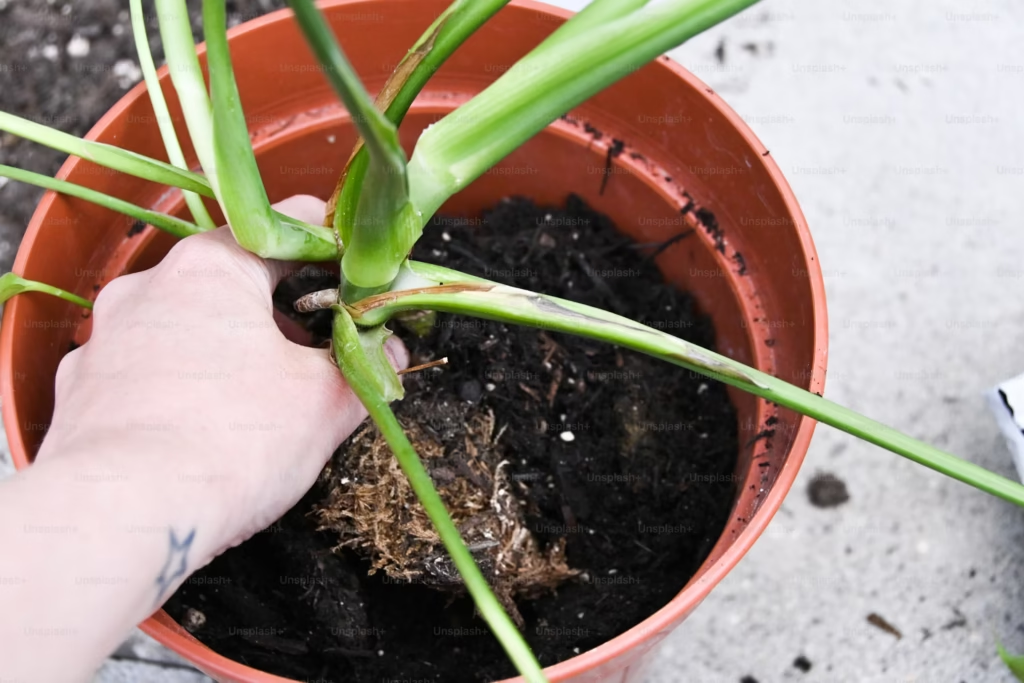
How to Identify and Treat Common Plant Diseases
Plant diseases can be a significant concern for both indoor and outdoor gardeners. Identifying them early can prevent them from spreading and damaging your plants. In this guide, we’ll walk you through how to identify and treat common plant diseases to keep your plants healthy and thriving.
1. Powdery Mildew
Identification:
- White, powdery spots on leaves, stems, or buds.
- Affected areas may become yellow or distorted over time.
Causes:
Powdery mildew thrives in warm, dry environments and can spread quickly if left untreated.
Treatment:
- Prune affected leaves: Remove infected plant parts to prevent the spread of the disease.
- Increase air circulation: Ensure your plants have adequate spacing and ventilation.
- Fungicide: Use a fungicide specifically for powdery mildew. Organic options include neem oil or a homemade solution of water and baking soda.
2. Root Rot
Identification:
- Wilting, yellowing leaves.
- A foul odor or blackened, mushy roots when you check the root system.
- Plants may suddenly collapse despite being watered regularly.
Causes:
Root rot is typically caused by overwatering or poorly-draining soil that leads to stagnant water around the roots.
Treatment:
- Remove affected roots: If you notice root rot, remove the plant from the soil and cut away the blackened, mushy roots.
- Repot in fresh soil: Make sure the new soil is well-draining to prevent future occurrences.
- Reduce watering: Water only when the soil has dried out to prevent waterlogging.
3. Leaf Spot Disease
Identification:
- Dark, round spots on leaves, often with a yellow halo.
- The spots may become larger or spread over time.
- Older leaves are usually affected first.
Causes:
Leaf spot disease is caused by fungi or bacteria that infect the plant through water droplets or rain. It is often exacerbated by high humidity or crowded growing conditions.
Treatment:
- Prune infected leaves: Remove the infected leaves to stop the disease from spreading.
- Improve air circulation: Space out your plants and avoid overhead watering.
- Fungicide: Apply a fungicide for fungal leaf spot or bactericide for bacterial leaf spot. Neem oil or copper-based fungicides are effective.
4. Aphid Infestation
Identification:
- Small, pear-shaped insects on the underside of leaves or stems.
- Sticky honeydew secretion on leaves and surrounding areas.
- Distorted or curled leaves.
Causes:
Aphids are sap-sucking insects that can weaken plants by feeding on their fluids. They can also transmit other plant diseases.
Treatment:
- Wash off aphids: Spray your plants with a strong stream of water to dislodge aphids from the leaves.
- Neem oil or insecticidal soap: Use these treatments to control aphids without harming your plants.
- Introduce beneficial insects: Ladybugs and lacewing larvae are natural aphid predators that can help keep aphid populations under control.
5. Rust
Identification:
- Orange, yellow, or red pustules or powdery patches on leaves, stems, and buds.
- Affected plant parts may become deformed or drop prematurely.
Causes:
Rust is a fungal infection that thrives in warm, moist conditions. It spreads via wind, water, and infected tools.
Treatment:
- Remove affected parts: Prune and discard any infected leaves or stems.
- Fungicide: Apply a rust-specific fungicide or neem oil.
- Improve plant spacing: Ensure adequate airflow around your plants to reduce humidity and prevent the spread of rust.
6. Blight (Early and Late Blight)
Identification:
- Early Blight: Small, dark lesions on leaves that turn brown and spread outward.
- Late Blight: Large, water-soaked spots with dark edges, often on leaves, stems, and fruits.
- Wilting, stunted growth, and discolored fruit can also be signs of blight.
Causes:
Blight is caused by fungal pathogens that spread rapidly in wet conditions. Early blight often affects tomatoes, while late blight can devastate potatoes and tomatoes.
Treatment:
- Prune infected parts: Remove and dispose of infected leaves or plants immediately.
- Fungicide: Apply fungicides as a preventive measure during humid conditions. Copper-based fungicides can work well for blight.
- Improve air circulation: Avoid overcrowding plants and ensure proper spacing to help reduce humidity around them.
7. Scale Insects
Identification:
- Small, hard, round, or oval-shaped insects that attach themselves to stems, leaves, or branches.
- Yellowing or wilting leaves.
- Sticky honeydew or black sooty mold growth on plants.
Causes:
Scale insects suck sap from plants, causing stress and weakening them over time.
Treatment:
- Prune and clean affected areas: Cut off heavily infested branches and wash the plant with soapy water to remove scales.
- Neem oil or horticultural oil: Apply neem oil or horticultural oil to smother the insects.
- Rubbing alcohol: Dab rubbing alcohol on individual scale insects with a cotton swab to kill them.
8. Whiteflies
Identification:
- Tiny, white, moth-like insects that gather on the undersides of leaves.
- Yellowing leaves and plant stunting due to sap feeding.
- Sticky honeydew and black mold on affected areas.
Causes:
Whiteflies feed on plant sap and can transmit various plant viruses.
Treatment:
- Wash plants: Spray plants with water to remove whiteflies.
- Yellow sticky traps: Use yellow sticky traps to attract and catch adult whiteflies.
- Insecticidal soap: Apply insecticidal soap or neem oil to kill whiteflies and prevent further infestations.
9. Fungus Gnats
Identification:
- Small, dark flying insects that resemble mosquitoes.
- Larvae are often found in the soil and feed on plant roots, causing yellowing leaves and wilting.
Causes:
Fungus gnats thrive in moist, poorly-draining soil and are often a sign of overwatering.
Treatment:
- Allow soil to dry out: Fungus gnats prefer moist environments, so let the soil dry out between waterings.
- Yellow sticky traps: Use sticky traps to capture adult gnats.
- Soil treatments: Apply diatomaceous earth or beneficial nematodes to the soil to target gnats at their larvae stage.
10. Leaf Curl
Identification:
- Leaves curl upwards, becoming distorted, yellow, or red.
- Often found on fruit trees like peaches or tomatoes.
Causes:
Leaf curl can be caused by a variety of factors including fungal infections, viral infections, or environmental stress like cold weather or overwatering.
Treatment:
- Prune and remove affected leaves: Remove infected leaves to prevent the spread of the disease.
- Use fungicides: Apply a fungicide to treat fungal infections like peach leaf curl.
- Check watering habits: Ensure you are watering consistently without overwatering.
Conclusion
Properly identifying and treating plant diseases is crucial to maintaining the health of your plants. Regularly inspect your plants for common signs of trouble such as yellowing, spots, or pests, and take immediate action to address any issues. By practicing good plant care, such as proper watering, soil management, and pest control, you can prevent many common plant diseases from spreading and keep your plants thriving.



